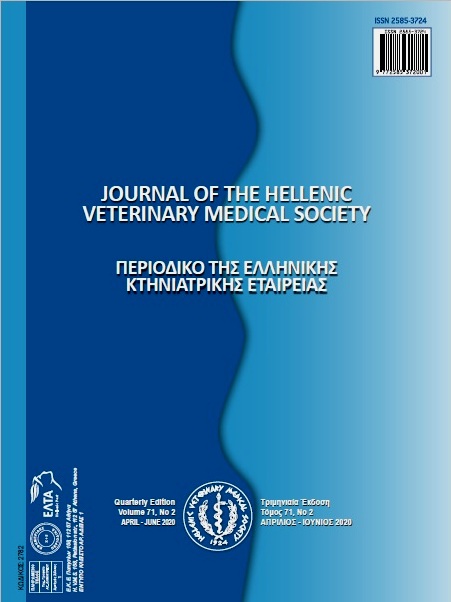Serum C-Reactive Protein, Erythrocyte Sedimentation Rate, and White Blood Cell Count in Romanov Sheep with Infectious Keratoconjunctivitis

Abstract
This study aimed to evaluate the use of erythrocyte sedimentation rate (ESR), C-reactive protein (CRP) and white blood cell count (WBC) as markers of the severity of inflammation in the eyes of the Romanov breed sheep with infectious keratoconjunctivitis. A total of 10 Romanov breed sheep between the 1.5 and 2 years of age, including the ones carrying infectious keratoconjunctivitis (G1, n = 5) and healthy ones (G2, n = 5), which were housed under the same care and nutrition conditions were examined, in a sheep breeding enterprise within the boundaries of Siirt province. Staphylococcus aureus sp., Clostridium spp., and Penicillium spp. were detected based on the microscopic morphology of the colonies in swabs collected from the eyes of sick animals. Biochemical tests were performed relevant to the suspected agents while no growth was detected in the swabs of the control group. There was a statistically significant difference in serum CRP and WBC levels between the G1 and G2 groups (p<0.05). No statistically significant difference was found between the values of the other parameters tested. Higher levels of CRP and WBC were determined in sheep having infectious keratoconjunctivitis, are compared to those in healthy animals.
Article Details
- How to Cite
-
AKGÜL, G., AKGÜL, M. B., IRAK, K., ÇELIK, Ö. Y., KAHYA DEMIRBILEK, S., & UZABACI, E. (2018). Serum C-Reactive Protein, Erythrocyte Sedimentation Rate, and White Blood Cell Count in Romanov Sheep with Infectious Keratoconjunctivitis. Journal of the Hellenic Veterinary Medical Society, 69(1), 797–800. https://doi.org/10.12681/jhvms.16428
- Issue
- Vol. 69 No. 1 (2018)
- Section
- Research Articles

This work is licensed under a Creative Commons Attribution-NonCommercial 4.0 International License.
Authors who publish with this journal agree to the following terms:
· Authors retain copyright and grant the journal right of first publication with the work simultaneously licensed under a Creative Commons Attribution Non-Commercial License that allows others to share the work with an acknowledgement of the work's authorship and initial publication in this journal.
· Authors are able to enter into separate, additional contractual arrangements for the non-exclusive distribution of the journal's published version of the work (e.g. post it to an institutional repository or publish it in a book), with an acknowledgement of its initial publication in this journal.
· Authors are permitted and encouraged to post their work online (preferably in institutional repositories or on their website) prior to and during the submission process, as it can lead to productive exchanges, as well as earlier and greater citation of published work.



